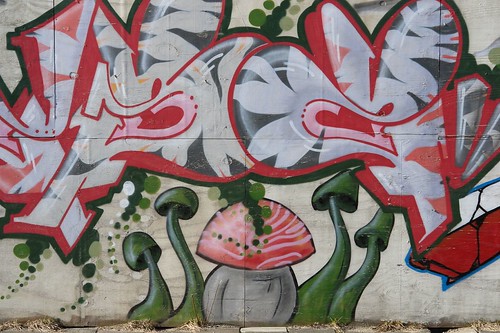Paddo's, miracles and saints
A French girl killed herself in Amsterdam not too long ago. Fred says that she jumped off a bridge into a canal. She was under the influence of magic mushrooms, or paddo's as they are known over here. Her mother is very upset, of course, and she wants to prosecute the Dutch State for allowing the sale of these paddos. I don't think she will have much luck, but what do I know about international law in such instances?
Paddo shops are to be found in many of the touristy areas of Amsterdam and they no doubt provide a point of interest for tourists coming to the city, as they are oin many other tourist haunts around the world, from a paddy field in Sumatra to the beaches of Thailand. Of course, the politicians in Holland have jumped on a bandwagon and are now calling for the sale to be banned, a clear sign that we have left the general concensus of liberalisation to nanny-statism.
I have not much idea how safe they are or not, but they are natural substances and can be plucked from the wild and have no doubt contributed much colour to human existence.
In the meantime, we hear from France that some young lady has received a 'miracle' cure by writing to the dead pope, John Paul II and that through this miracle the Catholic Church may be able to fast-track the beatification of their late leader.
I can't help but think that these superstitious ideas about miracles and saints is a big embarrassment to the current church leadership, but maybe I credit such leadership with too much sense.
Anyway, reading through some to the tales of saints and miracles, I can't help wonder under what sort of influence, certain witnesses or saints might have been under as in the following, where I question the nature of such ecstasies:
ST. LYDWINE OF SCHIEDAM (d. 1433), a victim soul who endured numerous afflictions that kept her perpetually bedridden, was once visited by the prior of the monastery of St. Elizabeth, which is situated near Brielle on the Island of Doorne. The Saint gave him a description so detailed of the cells, the chapel, the chapter house, the refectory and the porters’ lodge that the prior was astounded. “But how can you know all this?” he asked in amazement, knowing that she could not leave her bed. “My Father,” she replied with a smile, “I have been there frequently when I was in ecstasy . . .”
and also:
ST. CATHERINE DEI RICCI (d. 1590) was born of a distinguished Florentine family. She became prioress of St. Vincent’s convent at Prato and was outstanding among mystics for the intensity of her gifts and ecstasies. A stigmatic who suffered the agony of the Passion twenty-eight hours every week beginning at midday on Thursday and ending at four o’clock on Friday, Catherine also had the gift of bilocation. She is known to have had frequent conversations with St. Philip Neri while he was in Rome and she in her convent at Prato. Although they had exchanged a number of letters, they never met, except through their mystical visits, which St. Philip Neri readily admitted had occurred and which five reputable persons swore they had witnessed.





1 Comments:
zzzzz2018.6.16
supreme clothing
air max 90
pandora jewelry
michael kors outlet
tods outlet
ralph lauren uk
ray ban sunglasses
moncler jackets
coach factory outlet
adidas superstars
Post a Comment
<< Home